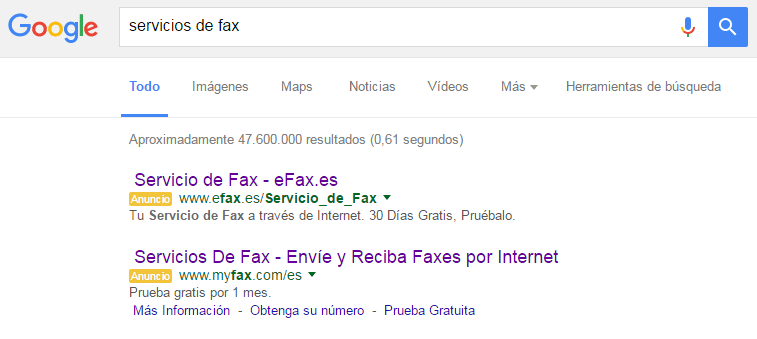Historias de aprendizaje: El Double Serving en Adwords
En esta serie de blogs sobre historias de aprendizaje tratamos sobre casos particulares que no hemos aprendido en la teoría sobre Adwords, pero hemos ido descubriendo con la experiencia que nos ha dado el poder haber ido trabajando con distintos clientes de distintos sectores y tamaños.
Para abordar el tema de hoy podríamos hacernos la siguiente pregunta: ¿Los Reyes Magos existen, o son los padres? Bueno, no exactamente esta misma, pero sí una igual de comprometida si cambiamos a los Magos de Oriente por “el Double Serving en Adwords”.
La polémica está servida. Si hablamos puramente de existencia, el Double Serving existe, es la posibilidad de que un anunciante aparezca más de una vez en las posiciones de pago de una misma página de búsqueda. Pero, ¿está esto permitido por Google? La respuesta a esta segunda pregunta ya es más complicada. Depende.
¿Qué dicen las Políticas Publicitarias de Google al respecto?
Buceando en las Las Políticas de Adwords la práctica prohibida que podría guardar relación con el Double Serving podría ser la que Google denomina como “Uso inadecuado o abuso de la red publicitaria”. En ella podemos leer la siguiente declaración: “Queremos que los anuncios sean útiles, variados, relevantes y seguros para los usuarios cuando los publicamos a través de la red de Google.” A continuación se listan una serie de prácticas no permitidas y ejemplos, pero en ninguna de ellas se cita al Double Serving.
De nuevo, dentro del contenido no permitido encontramos otro ejemplo que podría guardar relación con el Double Serving. Se menciona la prohibición de la “Obtención de una ventaja injusta”, pero entre los ejemplos no aparece el caso que en este artículo nos ocupa entre los ejemplos.
Sin embargo, tenemos que irnos a la sección de “Acciones posibles” ante las infracciones para encontrar una alusión que podamos relacionar con el Double Serving en Adwords. Dice así: “No se permite a los anunciantes promover el mismo contenido o contenidos similares desde varias cuentas en la misma consulta o consultas similares”.
¡Al fin algo de claridad en el asunto! Espera, ¿seguro?…

Ejemplo de anunciante ocupando dos posiciones de pago.
En la imagen superior vemos dos anuncios de distintas cuentas mostrándose en primera y segunda, pero sorprendentemente, en el footer de ambas landings podemos leer que ambas son marcas registradas por la misma empresa. Además, si continúas navegando, ambas comparten URL para el proceso de compra.
Entonces, ¿Cabe posibilidad a la interpretación de esta norma?
Al igual que los jueces tienen la capacidad de interpretar las leyes a la hora de aplicarlas, la misma competencia tiene Google con sus políticas.
¡Ay madre! Ahora que lo teníamos más o menos claro…
Lo cierto es que “contenidos similares” se queda en algo ambiguo. Si contenidos hace referencia únicamente al “contenido web”, entonces está claro; nadie puede duplicar una web con otro dominio y crear otra cuenta para publicitarlo con los mismos términos.
Sin embargo, si el contenido es el producto o servicio que en la web se publicita, es el término “similar” el que ahora nos hace dudar. Pull&Bear y Bershka podrían considerarse un mismo anunciante y no consideraríamos que estuviese haciendo Double Serving si compartieran impresiones, ya que son marcas distintas, aunque ambas formen parte de Inditex*.
*Haré un inciso en este punto para aclarar que desconozco si ambas marcas se publicitan por las mismas keywords y, por lo tanto, esto no pretende ser ninguna acusación. Ni siquiera voy a tomar la molestia de que lo estén haciendo o no ya que este no es el objetivo de este artículo.
Entonces, ¿hay casos en los que un anunciante podría hacer servir varias cuentas sin que esto pueda ser considerado Double Serving? Bueno, eso sólo tiene capacidad para interpretarlo el juez y parte del caso, es decir, Google. Pero en principio cabe pensar que, un mismo anunciante, con marcas diferenciadas, con públicos diferenciados o catálogos distintos podría intentarlo siempre que esté dispuesto a asumir el riesgo que ello implique.
Preguntas y respuestas al respecto
¿Recomiendas el Double Serving? No, no está permitido.
¿Y en estos casos en los que podría no ser interpretado como tal? Es una opción que puede ser viable y debería ser estudiada dentro de una estrategia global. Podría adoptarse si fuera en línea con los objetivos a perseguir. Siempre bajo tu responsabilidad y asumiendo los riesgos que pueda conllevar.
¿Ventaja principal? Aumento del porcentaje de impresiones disponibles; mayor exposición.
¿Desventaja principal? Aumento del coste publicitario.
Por último añadiría que Google es libre de cambiar sus políticas en cualquier momento, al igual que comenzar a aplicarlas de una forma más o menos estricta, igual que hace con el diseño de sus SERPS.



